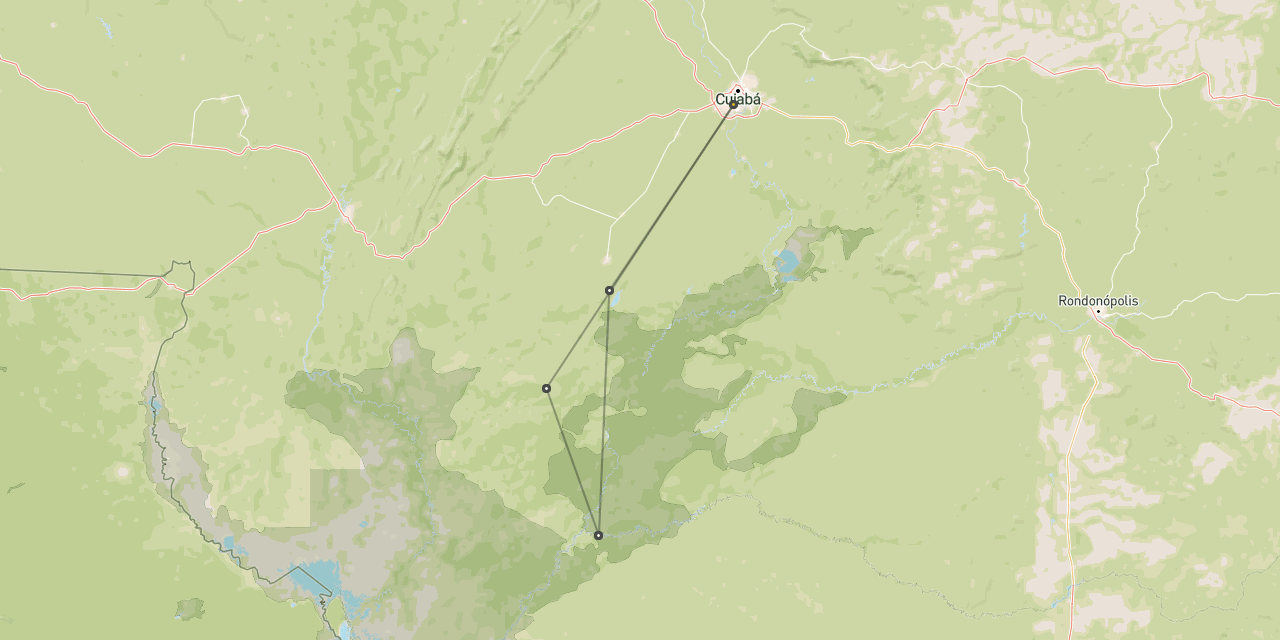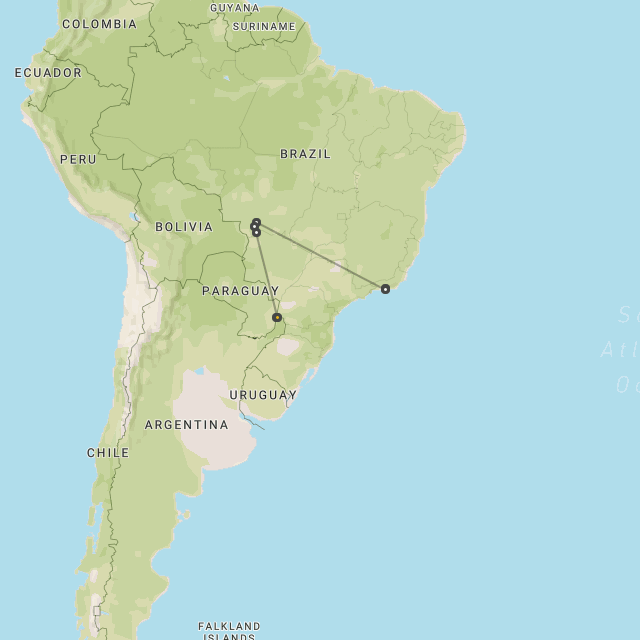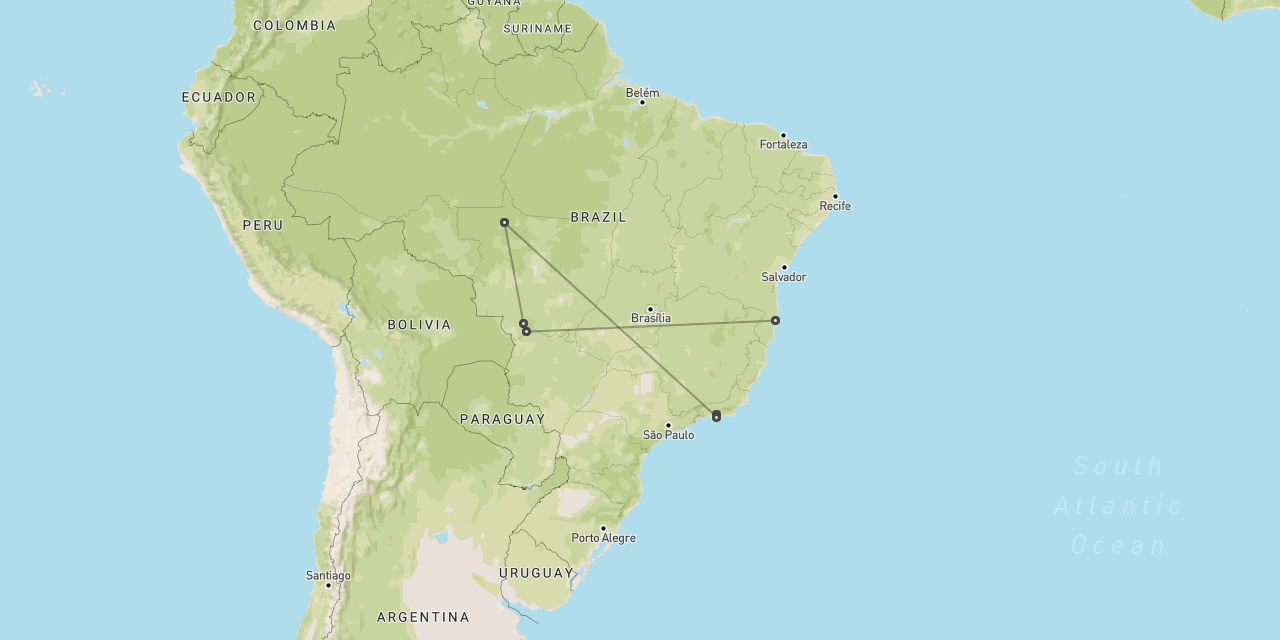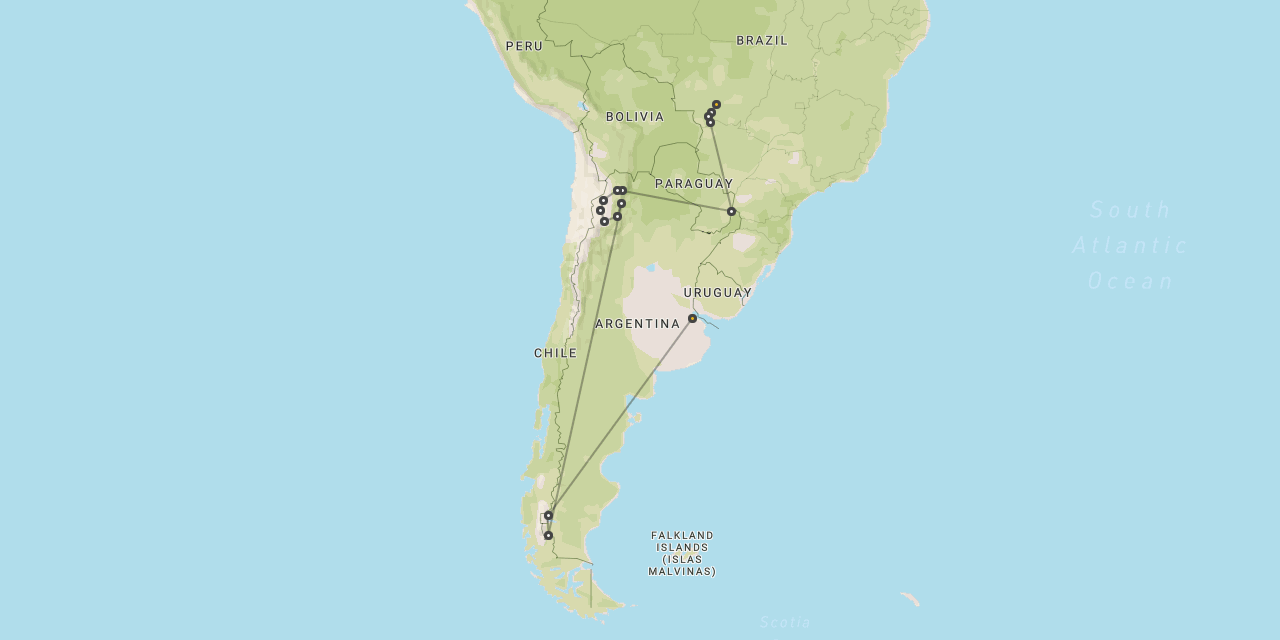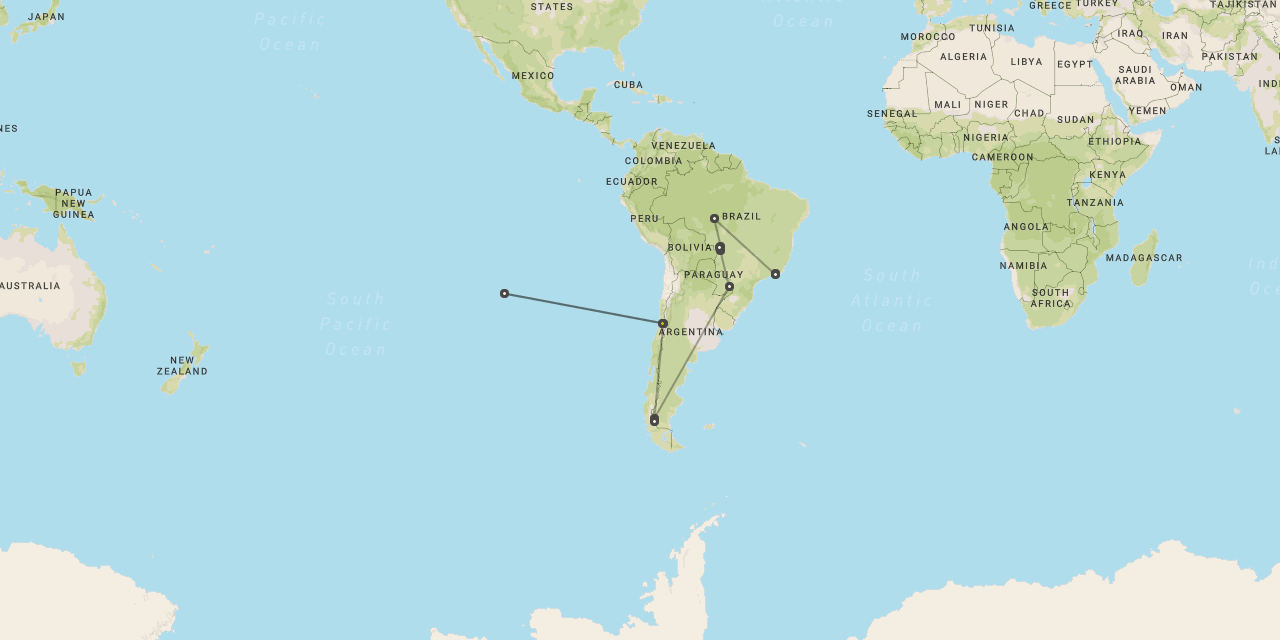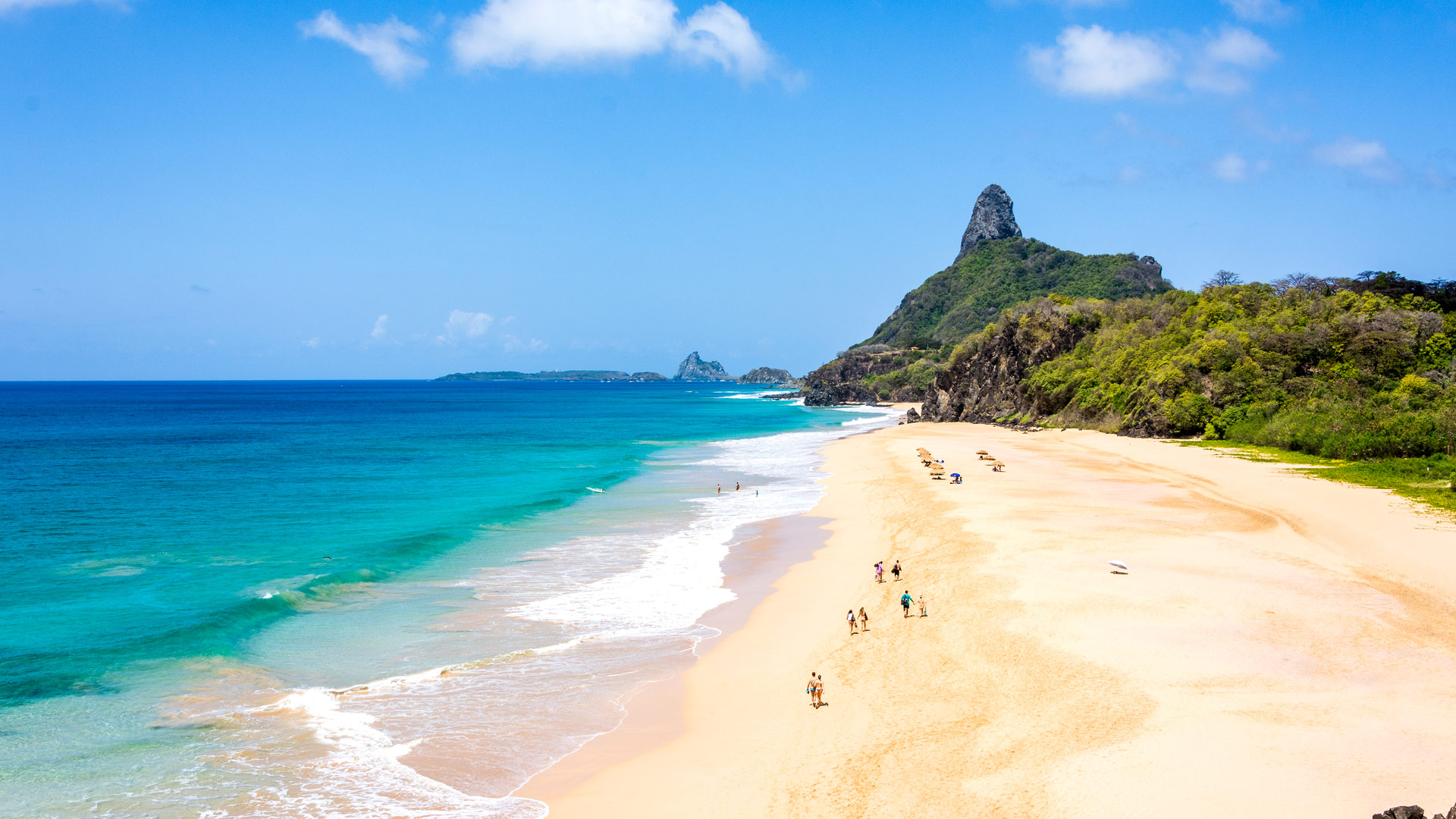
Travel to Fernando De Noronha
Fernando De Noronha
is a group of remote islands
off northeast Brazil
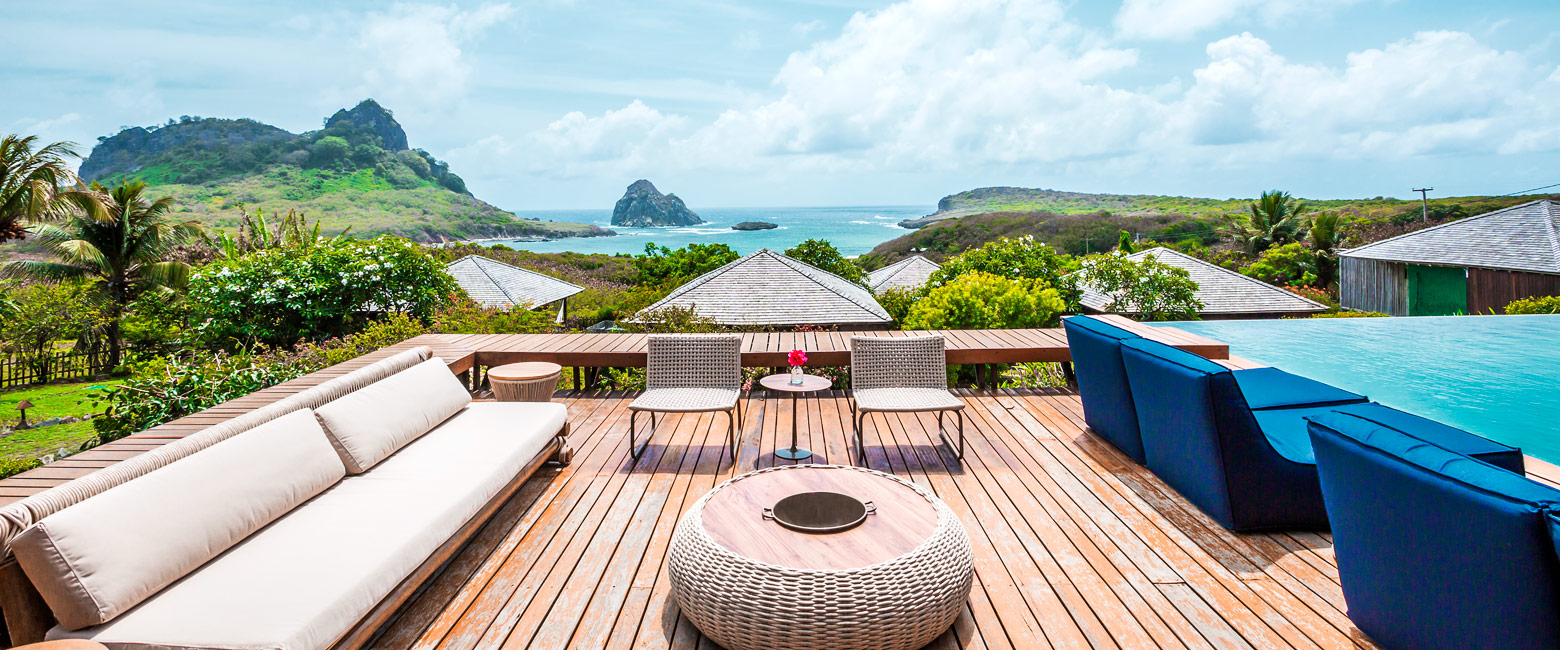
an early European foothold in South America
Set some 400 km (240 miles) offshore from the far northeastern tip of Brazil, way out in the Atlantic Ocean, Fernando De Noronha is a group of around twenty islands, the largest of which carries the same name and covers an area of just 18 square kilometres (7 square miles).
The islands are of great historical importance, since they lie along the route between Portugal and South America. They were first recorded in 1503 by the merchant Fernão de Loronha (after whom they are incorrectly named), who was accompanied by Italian adventurer Amerigo Vespucci, after whom the whole continent was (also incorrectly) named. Their ship foundered on one of the many reefs and they were obliged to make landfall on this uninhabited island to make repairs.
For almost two hundred years (1500-1700 AD) the island served as the main hub for the trading business that Loronha and his descendants built, consolidating their various exotic purchases (notably tropical hardwoods) from the coast of Brazil into wharfs and warehouses that they constructed here, before shipping them back to Portugal.
In 1832 the island was visited by the HMS Beagle and the naturalist Charles Darwin.
The island was later used by the government of Brazil as a high security prison, during the period 1896-1945.
In 1988 over 70% of the archipelago was declared a national park, with the intention of protecting both the land and ocean ecosystems. This status was increased in 2001, when the area was declared a UNESCO World Heritage Site.
The marine landscapes here are considered to be of special note as they are important feeding grounds for species including tunas, billfish, spinner dolphins, sharks and (critically endangered) hawksbill turtles.
The main island has some modestly pretty mountain scenery, a number of decent beaches and some interesting historic buildings, with activities being centred on hiking, snorkelling and diving.
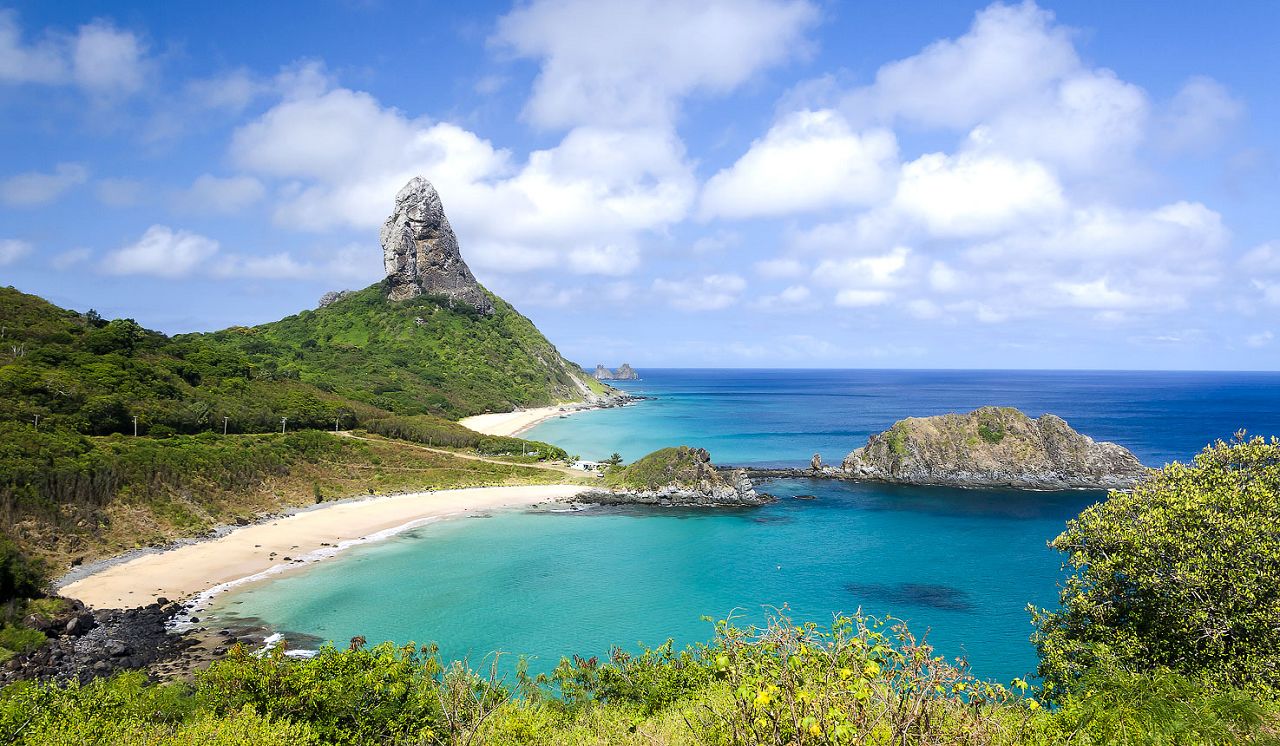
Gallery
Map
The best time to visit Fernando De Noronha is generally considered to be during the Aug-Jan dry season.
The islands are classified as having a tropical wet and dry climate, with two clearly defined seasons …
Aug-Jan : dry season
During the Aug-Jan dry season the daytime temperatures are relatively high at around 29C/84F, whilst the nighttime low temperatures hold up around 24C/75F. However the rainfall is relatively light, at around 25mm (1”) per month. Sunshine is around 9 hours per day (around 80% of daylight hours), which is very high. Decent ocean breezes usually keep the conditions relatively comfortable.
Feb-Jul : rainy season
During the Mar-Jul rainy season the daytime temperatures are marginally higher at around 30C/86F, as are the nighttime low temperatures at around 25C/77F. The rainfall is very high, at around 175mm (7”) per month. Sunshine is around around 7 hours per day (around 60% of daylight hours), meaning that there is usually at least some cloud around. Decent ocean breezes usually keep the conditions relatively comfortable.
Getting there
The island is home to Fernando De Noronha Airport (FEN), which has direct flight connections with Recife on the mainland coast, with (usually well-timed) connecting flights on to Sao Paulo, Rio de Janeiro, Brasília, Salvador and (occasionally) Manaus.
From the airport it is a road transfer of just a few minutes to anywhere.
Where to stay
Tourism activity on the island is heavily controlled and there is only a modest selection of small and relatively simple lodges, of which Pousada Maravilha is almost certainly the best.
complicated and expensive to get to
let us know your thoughts about Brazil
and we will help you create the perfect trip

Extraordinary tailor-made adventures,
from earthy and edgy to easy and extravagant
From around USD 2500 per person, you set the ceiling
Sample Trips
Here are some of our popular trip shapes

Get started on your trip
It’s never too soon to get in touch, we are here to help with every stage of your planning.
Best Lodges
We regularly inspect and photograph all of the the best lodges, to ensure that we always recommend the most suitable options
Key Locations
Take a look around related locations. Click ‘View more’ to explore locations further afield.











